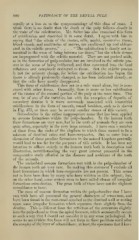Page 870 - My FlipBook
P. 870
880 PATHOLOGY OF THE DENTAL PULP.
equally at a loss as to the symptomatology of this class of cases. I
think there is no doubt that the death of the pulp follows closely in
the wake of the calcification. Mr. Salter has also examined this form
of calcification and described it in some detail. I agree with him in
saying that " the whole of the tissues, cells, nuclei, connective tissue,
blood-vessels, and multitudes of nerves, are swallowed up and obliter-
ated in the calcific process." . . . . " The calcification is clearly not in-
terstitial in the sense of being between the fibres," but the whole tissues
are impregnated with the calcific material. They are not pushed aside,
as in the formation of pulp-nodules, but are involved in the calcific pro-
cess in the sense of being infiltrated, and thus converted into the hard
substance and completely destroyed as tissue. But the calcific process
is not the primary change, for before the calcification has begun the
tissue is already profoundly changed, as has been indicated already, so
that the cells have mostly disappeared.
This form of calcification does not as a rule stand alone, but is asso-
ciated with other forms. Generally, there is more or less calcification
of the tissues of the coronal portion of the pulp at the same time. This
may be of any of the varieties, but Avith the exception of deposits of
secondary dentine it is more commonly associated with interstitial
calcifications in the form of smooth, round boulders, such as is shown
in Fig. 472, or there may be several smaller stones of this variety.
Ostco-deiitine is the rather inappropriate name that has been applied
to osseous formations within the pulp-chamber. In the human teeth
these formations are very rare, but in the teeth of animals they are seen
quite often, especially in the very large animals. I have seen a number
of these from the tusks of the elephant in which there seemed to be a
mixture of dentinal tubes and bone-corpuscles. But to enter into a
discussion of these peculiar formations in the animal kingdom generally
would lead us too far for the purposes of this article. It has been my
intention to adhere strictly to the human teeth both in description and
illustration, notwithstanding the very great interest presented in the
comparative study aiforded in the diseases and accidents of the teeth
of the animals.
The undoubted osseous formations met with in the pulp-chamber of
the human teeth are very rare. In making this statement I exclude all
hard formations in which bone-corpuscles are not present. This seems
not to have been done by many who have written on this subject ; but,
on the other hand, some writers seem to have called almost all irregular
formations ostco-dentine. The great bulk of these have not the slightest
resemblance to bone.
The cases of osseous formation within the pulp-chamber that I have
met with have all presented the general characters of cementum, and
have been found in the root-canal attached to the dentinal wall or resting
n])on some irregular formation which separates them slightly from the
dentine. This is different from the reflection of the cementum slightly
into the pulp-chamber from the apical foramen, which occasionally occurs
in such a way that I should not consider it in any sense pathological. It
seems to me evident that bone M'ill not form in these positions until after
the atrophy of the layer of odontoblasts ; at least, the specimens that I have


